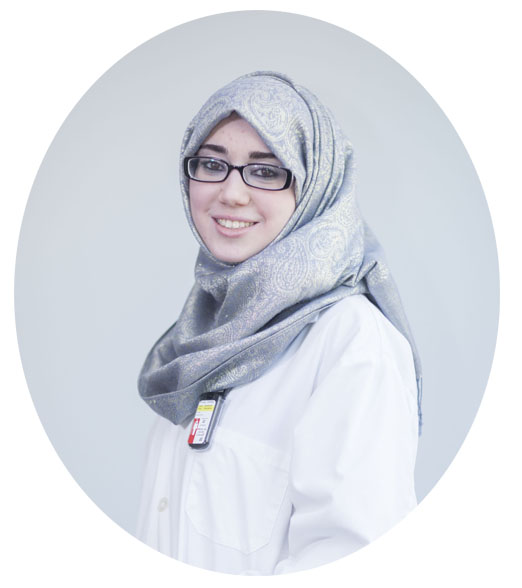Breadcrumbs
Medical Radiation Sciences Program
In addition to oversight over the MD and MD/PhD Programs, Dr. Jay Rosenfield has academic oversight of the Medical Radiation Sciences and had oversight of the Physician Assistant undergraduate degree program until 2016.
Redesigned curriculum for nuclear medicine and molecular imaging technology
The Nuclear Medicine and Molecular Imaging Technology program launched a redesigned curriculum in the 2014-2015 academic year. This program is one stream of the Medical Radiation Sciences program, a professional, undergraduate program jointly administered by the Department of Radiation Oncology and the Michener Institute of Education at UHN.
In September 2014, 14 students joined the newly revamped program as its first cohort. They were the first to experience the program’s new ‘flipped classroom’ approach. By introducing content through online materials and other resources, students have greater flexibility and are encouraged to maximize their learning through lab work or live simulations.
The redesigned curriculum also includes case-based learning, which encourages the application of knowledge to patient cases. “Case-based learning enables students to develop the critical inquiry and problem-solving abilities that will help them become well-rounded technologists,” says Cate Palmer, Program Director of the MRS Program. “The new curriculum fosters skills that ensure students are flexible and have translatable skills across the practice of nuclear medicine as well as elective sub-specialties of Magnetic Resonance Imaging (MRI), Imaging Informatics or clinical management.”
Integration is an important feature of the new curriculum. Four integrated courses span the first two years of the program, with competencies that are interwoven throughout courses and learning environments, enabling students to apply what they learn across various areas.
Another key feature in the new program is that students gain clinical experience earlier on in their studies. In their fourth and fifth semesters, students spend roughly one week per month in clinical placements to prepare them for the full year of clinical training that starts in their sixth semester.
To enable this curricular redesign, the program suspended intake to the nuclear medicine stream for the 2012–2013 and 2013–2014 academic years. The program was redesigned in broad consultation with professional stakeholder groups (clinical managers, educators, professional associations, etc.) and sought expertise from curriculum design experts and medical imaging professionals.
The Medical Radiation Sciences (MRS) program is a second-entry, professional undergraduate program administered jointly by the Department of Radiation Oncology, the Faculty of Medicine and Michener Institute of Education at UHN (Michener). This partnership combines the strengths of the two institutions and makes full use of their complimentary resources and expertise to offer both a Bachelor of Sciences in Medical Radiation Sciences (BScMRS) from the University of Toronto and an Advanced Diploma in Health Sciences from Michener. This collaboration has contributed to an exceptional level of program integration in all three of the program’s disciplines: Radiological Technology, Radiation Therapy and the newly redesigned Nuclear Medicine and Molecular Imaging Technology.
Spotlight on second-year student Reem Hamdonah
 Reem Hamdonah is a member of the first cohort of the newly redesigned Nuclear Medicine and Molecular Imaging Technology Program. Just finishing her second year, Hamdonah enjoys the flexibility the online content provides. “Preparing for the online weekly quizzes ensures that we are ready for the coming week and gives us a better understanding of the content,” explains Hamdonah. “Instead of being exposed to content for the first time in class, we already have some understanding, so we are able to deepen our knowledge and make the most of the time spent in our lectures and labs.”
Reem Hamdonah is a member of the first cohort of the newly redesigned Nuclear Medicine and Molecular Imaging Technology Program. Just finishing her second year, Hamdonah enjoys the flexibility the online content provides. “Preparing for the online weekly quizzes ensures that we are ready for the coming week and gives us a better understanding of the content,” explains Hamdonah. “Instead of being exposed to content for the first time in class, we already have some understanding, so we are able to deepen our knowledge and make the most of the time spent in our lectures and labs.”
Online content also enables students to learn at their own pace. “You know your own strengths and weaknesses,” she asserts. “With the flexibility provided by online content, we can maximize our time.”
Hamdonah’s clinical placement at St. Michael’s Hospital provided her with valuable hands-on learning. “Placements help keep skills fresh and enable us to apply what we are learning at the same time,” she says. “As I have increased my capabilities, my clinical coordinator has given me more responsibility – she knows my strengths, as well as what I need to work on.”
Throughout her placement, Hamdonah saw a wide variety of patients and dealt with diverse scenarios. “The real-life cases help build confidence,” she continues. “The patient care skills I learned on-site have been invaluable. On the ground, you need to think critically and work effectively in an interprofessional team – but you also build soft skills, like how to explain a procedure to a patient with a language barrier, or how to support and calm a claustrophobic patient during a procedure.”
Hamdonah’s interest in the program stemmed from the practical applicability of the skills learned. She has since found that the interactions with patients are an important part of her love of the program, and is enthusiastic about the professional opportunities open to her following her studies.
What does a Nuclear Medicine Technologist do?
- Prepares and administers radiopharmaceuticals to patients
- Interacts closely with patients, physicians and other members of the health care team to obtain the best diagnostic information possible
- Acquires and analyzes diagnostic images using the latest in gamma camera, positron emission tomography (PET) and hybrid technologies
Photos on this page: © 2015 The Michener Institute. © University of Toronto; All copyrights, licensing, duplication and distribution rights are held exclusively by The Michener Institute and University of Toronto. Unauthorized use or reproduction of this material is strictly prohibited. All Rights Reserved.
